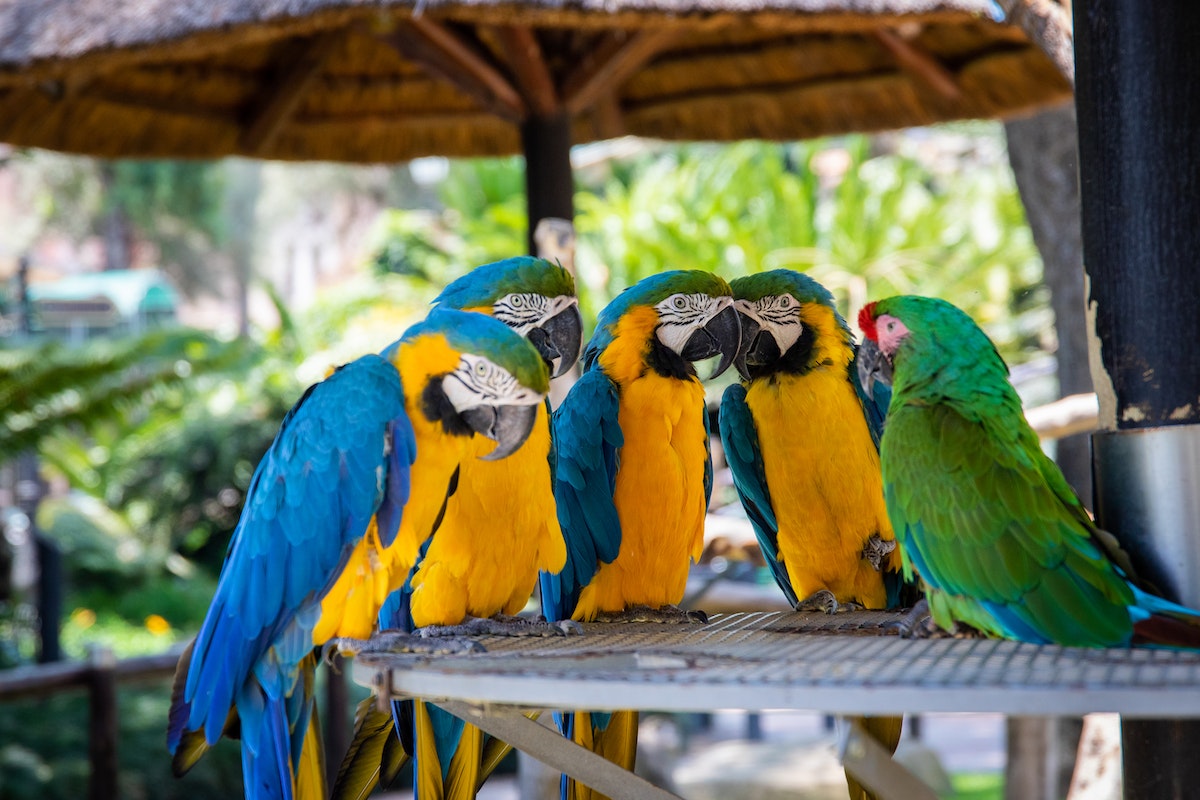Introduction:
Our fascination in parrots has been sparked by their colorful plumage, amazing imitation skills, and endearing personalities for a very long time. Scientists and bird fans alike continue to be fascinated by the astounding degree of intelligence that hides underneath their colorful façade. This blog delves into the subject of parrot intelligence, examining how intelligent these amazing birds really are and revealing the mechanisms underlying their cognitive prowess.
Communication Skills:
Parrot intelligence is most famous for its remarkable communication skills. Due to their highly developed vocal learning skills, parrots are known for being able to mimic human speech and a variety of other sounds. African grey parrots and other similar species have been shown to learn hundreds of phrases and utilize them in context.
The ability of parrots to communicate, however, goes beyond imitation. Studies have demonstrated that they are capable of understanding rudimentary grammar principles and basic syntax. This capacity to connect certain vocalizations to meanings demonstrates their highly developed cognitive powers.
Problem Solving and Tool Use:
Parrots have a remarkable degree of cognitive flexibility and are quite skilled at solving problems. They can learn to control items, solve puzzles, and even employ tools to achieve certain objectives. The New Caledonian crow, which is particularly notable for its exceptional tool-making abilities, performs this behavior.
In one study, experts gave caged parrots a series of challenging issues that needed the birds to utilize tools to solve in order to get rewards. Surprisingly, the parrots picked up on choosing and using the right equipment for the job rather fast. This revealed their capacity for complex problem-solving techniques, planning, and reasoning.
The Psittacidae family of birds, which has more than 393 species, includes parrots, who are noted for their cognitive abilities. These birds can pull off a variety of astonishing feats because to their highly developed cognitive capacities. its ability to mimic vocalizations is one of its most prominent traits. Parrots are able to mimic a wide range of sounds, including human speech, music, and background noises. This ability reveals their highly developed auditory processing and memory skills.
The Psittacidae family of birds, which has more than 393 species, includes parrots, who are noted for their cognitive abilities. These birds can pull off a variety of astonishing feats because to their highly developed cognitive capacities. its ability to mimic vocalizations is one of its most prominent traits. Parrots are able to mimic a wide range of sounds, including human speech, music, and background noises. This ability reveals their highly developed auditory processing and memory skills.
The Cognitive Abilities of Parrots:
The Psittacidae family of birds, which has more than 393 species, includes parrots, who are noted for their cognitive abilities. These birds can pull off a variety of astonishing feats because to their highly developed cognitive capacities. its ability to mimic vocalizations is one of its most prominent traits. Parrots are able to mimic a wide range of sounds, including human speech, music, and background noises. This ability reveals their highly developed auditory processing and memory skills.
Problem-Solving Skills:
Excellent problem-solvers, parrots frequently demonstrate their intellect through creative actions. They are able to handle items, solve challenging puzzles, and traverse complicated ones. According to research, parrots are remarkably capable of using logic and can comprehend cause-and-effect relationships. Their aptitude for puzzle-solving demonstrates their versatility and mental flexibility.
Tool Use and Manufacture:
Additionally, parrots have shown that they can make and utilize tools. Some creatures in the wild utilize sticks or other things to scrape food out of cracks or branches. It has been noted that captive parrots alter items to suit their purposes, such as curving sticks to hit particular targets. These actions reveal exceptional intellect and flexibility. A number of elements affect parrot intelligence. Their highly developed brain structure, particularly the regions connected to memory, problem-solving, and voice learning, is the first and predominant factor. Enriching the environment is also very important. Parrots flourish in settings that offer opportunity for play and exploration, as well as cerebral and social stimulation. Their ability to think critically is also influenced by regular contact with people.
Conclusion:
The ability to mimic speech and the brilliant plumage of parrots have long attracted humans. They are vocally capable, but their intelligence goes well beyond that. Parrots are comparable to many other highly intelligent animals in their cognitive, problem-solving, and social ability. The intricacy and diversity of intelligence throughout the animal kingdom are revealed as we get a greater respect for these wonderful birds by learning about the inner workings of parrot intelligence. So let’s keep exploring the mysteries of parrot intelligence while awe-struck by their extraordinary minds and the wonders they add to our environment.






















